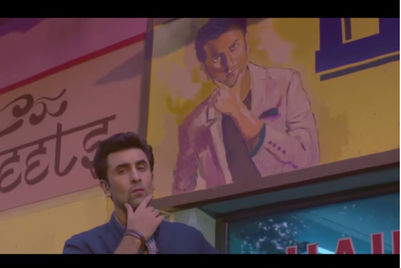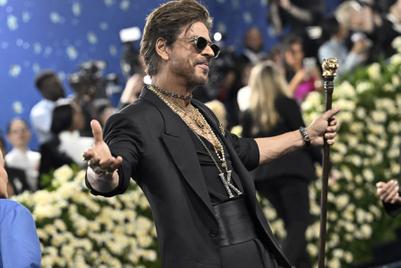What has been Renault’s experience of the Indian market since entry in 2007?
In 2007, we entered with Mahindra through a joint venture. Those cars were also marketed under two joint venture brands.
Renault independently came to India in 2011. In the first year it was only about bringing the brand to the country. This was followed by launching our cars. In July 2012, we launched Duster. That was the main phase of Renault in India. We are one of the youngest automotive brands in the country. In a short span of time we became the number one European brand (in terms of sales, for 2013 and 2014) and also the number nine brand in the Indian auto space. What was more important to us was being the number one European brand.
We’ve been able to establish ourselves in a short three-year span. We have a long-term view and vision for the country. We’ve launched the Lodgy also recently. In the festive period we’re launching a small car, what we believe is a game-changer, the Kwid. So, overall, pretty exciting times for us, and there’s still a long way to go.
How has the profile and mindset of the Indian car buyer changed since the last few years?
Indian car buying is much different from the global trends. An Indian buyer largely has an investment mindset, rather than an expense mindset. He is looking forward to things which are contemporary, new on technology, but at the same time high on value. So, keeping that in mind one has to make sure, you bring the best products to the country. As the consumer has an investment mindset, products which can deliver on performance are important too. We have seen that with the Duster. It has been the most successful SUV in this country. Today, we have more than 1.3 lakh cars on Indian roads and have established a strong credibility with the product performance. Whoever owns and drives a Duster is a very happy customer and that is very important. It’s not only the shape or style, what is more important is the product performance.
The customer is also looking forward to reach, and we’ve expanded our network very fast. By end of this year (December 2015), we’ll be looking to have more than 200 sales outlets and more than 200 sales and service outlets.
We’re getting closer to the consumer. While we’re seeing a few small changes in the consumer mindset, the basics stay the same.
We currently have 166 sales outlets. This is the figure as of July 2015. We want to open 34 outlets between now and December and this will coincide with the launch of the Kwid.
Where do you plan to launch these 34 outlets? Where are the majority of the outlets currently?
We have largely covered all the major metros. These outlets are largely going to come in tier three and tier four cities.
The Duster has been a success, selling 1.3 lakh vehicle. But there is competition now, from EcoSport, Creta, S-Cross, Terrano. Do you believe the brand can hold its own? Why?
The Duster was the first vehicle that created the segment. We still don’t have strong inroads in tier three and four cities for the vehicle. We’re expanding and want to enter those markets, so that remains an opportunity for us. The Duster has achieved a cult brand status now. It’s the benchmark.
We are confident about the Duster and it’s one important mainstream product for us. I’m sure that the kind of performance the car delivers, with its quality, it’ll remain very strong in the country.
Do you believe the price-value equation of Duster be an advantage, over newer entrants into compact SUVs?
I think what the consumers are getting on the Duster is a very good price-value equation. It’s a European car with a high performance and quality assurance. I think we are very well placed in the value proposition and that’s the reason why we’ve been consistent in terms of performance of this car.
How many of the Duster customers are first-time car buyers? Do you see this number increasing, as a percentage of all Duster buyers? For how many of them, in your view, it would be the second car in the garage?
Most of the time, the Duster buyer is an existing car owner. We’re seeing a lot of hatchback buyers, moving up straight to Duster, versus otherwise moving to a sedan.
The expectations were high for Lodgy. How has it done so far?
The Lodgy is in the MPV segment. A MPV is a strong rationale buy. We launched the car in April 2015. In the first three-four months of the business, we are number three in terms of sales in this segment. The MPV segment is seeing a drop. We were expecting growth in this segment. Last month, MPV de-grew by 18 per cent. But, as I said, we’ve established ourselves in the market. We are new in this segment and are going to establish ourselves with a strong performance. This segment first sees someone come on road and delivering performance and then acceptability starts growing. Unlike SUVs, which are emotive buys, MPVs are more rationale buys. We are well-focused with the Lodgy in this segment, and we should see the right results.
We are still not open completely for the MPV. We are going to launch the seven-seater versions soon. In India, for corporate fleets, seven-seaters are very important. So, that’s one market we’re yet to enter. Almost 40 per cent of MPVs are sold in this segment. We’re not in this category right now, and are getting there step-by-step. Lodgy has all the basics right (the same engine as the Duster) and good performance too.
Kwid has very high expectations riding on it too. Is roping in Ranbir a timely effort to focus on the mass segment with Kwid and to some extent, the Rs 5 lakh-odd Pulse? If not, what’s the rationale behind the celebrity tie-up?
We’ve had the Pulse competing in the premium hatchback segment, but now we’re getting into the mini-car market, which is roughly about 24 to 25 per cent, with the Kwid. We are a 117-year brand globally. We are a very young brand in the country. Renault is a brand which is very vibrant and forward looking. We are looking forward to connecting with people in India and bringing Ranbir as a brand ambassador is an ideal partnership. He’s a perfect fit. It was a right marriage of personalities. A brand ambassador that is a fit with brand values can really help a brand in India to communicate and converse with customers. It’s not limited only to major cities, but across the country. It’s a very useful association in the long term perspective.
Is the entry level market in India the hardest to crack, given an entrenched market leader? If not, which is the hardest to crack?
From an opportunity point of view this is a strong category. You can see that the customer is cautious in this segment. But, one good thing in this segment that you’re not seeing is that there isn’t much innovation in terms of products. All the launches have happened in the premium hatch category. So, there is a lack of freshness. The Kwid addresses this.
In India, if you have to succeed, like I said earlier, it’s about ‘right product, right time and right price’.
So, the Kwid is the right product. The time is opportune too. We’re seeing progressive young Indians who want to graduate to a four-wheeler, aren’t looking at compromises. They want a contemporary and stylish product. This will be a game-changer again.
Lastly, the price and value it gives to the customers is also right. Through a high level of localisation, we’ve addressed that. A lot of things which are challenges, we’ve monitored them closely so that we can control them.
Indians have been familiar with German cars, Japanese, Korean and American even. Does being French help the brand (as a differentiator) or is a hindrance? Is it a factor at all?
I think in the last three years, we’ve been able to establish Renault as a strong European brand which is through its technology, quality. People have seen the car winning in F1 and consider it as a brand which is delivering technology, quality and reliability. That is one of the reasons we’ve seen such great success with the Duster.
What were the learnings Renault took from its partnership with Mahindra, and how have they impacted what Renault is doing in India?
On the whole, the important learnings we’ve had for Renault is to bring right products, at a right time and at a right price. That’s most important for Indian consumers. That’s what we’ve tried with the Duster and Lodgy and now for the Kwid, which is a very exciting product from our side. We know the importance of the Indian market. We are the only manufacturer that will be launching a small car, or a mini car with close to 98 per cent localisation in India, on the day of launch. That’s very big.
We have very strong long-term plans for India and we are leveraging all opportunities that are available in this country. To do that, we’ve worked on our basics for the last three to four years. We have a plant that has 4.8 lakh capacity. We have a technology, an R&D centre that is employing more than 5,000 people. We were the first manufacturer in the country to open a design studio. Now, we have two design studios – one each in Mumbai and Chennai. We have a big parts centre in Pune. We were building our foundation in India to build towards our ‘right product, right time and right price’ philosophy.
You can’t have the right price if you don’t build a few things locally. Higher amount of localisation improves your risk against any foreign fluctuations. Now, after working on localisation for the last few years, we are ready to take the second big step in our growth story in India.
What does Renault have in store for the festive season? Besides Kwid, which we are told is on the agenda?
The festive season will be exciting for us across all our products. If I see from the next few years’ objective, we want to achieve 5 per cent market share (from about 2 per cent in 2014).
What is Renault’s annual ad spend in India? How is this split across mediums? What is the role of each medium today in impacting a car-buyer’s decision?
Digital is growing for us. It’s a very important space for us and for India. Being a young brand, we have been having a considerable presence in TV and print too (along with digital). I see digital in Indian moving from strong to stronger. It’s going to be very important not only for marketing, but a medium where consumers understand your product. One question you’d asked in the beginning about the change in consumers – the biggest change is that when a customer comes to a showroom, he knows exactly what he wants to buy. He has product knowledge, feature knowledge. That wasn’t the case about 10 years ago. It’s important for us at this stage to work on all three (TVCs, print and digital).
Print has taken a tactical position. This helps on the consideration and purchasing side. It helps with key messaging along with commercial offers.
TV advertising helps in awareness. Digital helps in creating familiarity and consideration.
(This article first appeared in the 21 August issue of Campaign India)




.jpg&h=334&w=500&q=100&v=20250320&c=1)
.jpg&h=334&w=500&q=100&v=20250320&c=1)



.jpg&h=334&w=500&q=100&v=20250320&c=1)
.jpg&h=334&w=500&q=100&v=20250320&c=1)

.jpg&h=334&w=500&q=100&v=20250320&c=1)






.jpg&h=268&w=401&q=100&v=20250320&c=1)

